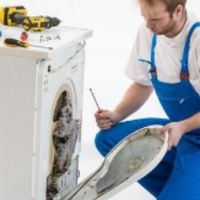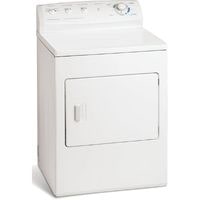Frigidaire dryer won’t start. Has your Frigidaire dryer stopped working? Nothing can be more annoying than trying to dry a load of laundry in your stylish-looking Frigidaire machine only to be greeted by an error message and not having the understanding or knowledge about what needs to be done for it to get working again.
Fortunately, we’ve written a few simple troubleshooting steps you can follow in order to figure out what might have gone wrong with your clothes drying device, thus allowing you the peace of mind knowing that in the near future, your Frigidaire appliance will be functional once again.
Frigidaire dryer won’t start
Frigidaire dryer won’t start. Has your Frigidaire dryer stopped drying your clothes? Not being able to get the clothes dried can really be a pain.
In this article, we’ve listed several ways you can troubleshoot common machine problems and get them up and running without purchasing a new one.
Dryer not getting power
Troubleshooting a refrigerator dryer begins with a simple power test. You won’t be able to start your dryer if it isn’t receiving enough power. Check the following things to determine if your appliance is having power issues:
(1) Make sure your dryer is plugged into a working outlet by itself. Don’t try using an extension cord because most can’t deliver enough current for the unit to start up without potentially causing a dangerous fire.
( 2) Check to make sure your home’s circuit breaker or fuse box isn’t tripped, and if they are, reset them and replace any fuses that have blown out.
The thermal fuse has blown
A thermal fuse is a tool used to help keep clothing from becoming burned. It prevents something called thermal runaway. A thermal runaway is when the temperature gets hotter than it should.
And will become out of control once the fuse blows which saves the piece of clothing that would possibly burn if this process was not stopped by the thermal fuse.
The thermal fuse can be found in almost any type of dryer you come across whether it be a gas dryer or an electric, but most commonly it can be found near the heating source inside the dryer.
To determine if the thermal fuses are ok you must examine it from continuity meaning if there is no problem with it.
Defective Dryer Start Switch
Check that the dryer is plugged into a working outlet to determine if the start switch is defective. If the dryer is not plugged in, there are other reasons for its failure troubleshooting will be required but it’s an easy process and most likely related to any of the following steps.
If it turns out to be a simple act of plugging the machine back into a working outlet and then pressing the start button again, continue this troubleshooting process until you identify where exactly the problem lies.
Failed Dryer Motor
The drive motor turns the drum and the belt inside to remove air. Before you proceed make sure your starting switch, thermometer, and door switch are all in order.
If they are all working properly but your dryer is still making a humming noise then check if the blower wheel has any obstructions.
If there are no obstructions then most likely it’s your motor that needs replacing. If that’s what you find out, well you certainly might have had to replace it after all.
There is no continuity in the door switch
The door switch activates when the dryer door is shut. On most dryers, the door switch makes a clicking sound when it detects that the door is shut.
To determine if the door switch is working, turn on your dryer and listen to hear whether or not you can hear a click. If you don’t hear a click, use a multimeter to check for continuity of the door switch. If there is no continuity, then replace it.
Replacement of Belt Switch
A faulty dryer belt can often cause the motor to hum, but not start; however, some dryers have a separate switch that will cut power from the machine if the belt snaps.
If this happens, it could prevent your dryer from working – even when there is no longer a problem with your belt and the clothes are still damp.
First off, try starting your machine (should you be able to), and listen for a humming noise. Then, look up your model on google to see whether or not you have a switch.
If so, use a multimeter set at 200 volts current to check if there’s continuity between two of the leads on that switch, if none exists, you need a new one.
The timer might be defective
The electrical timer might not be working properly. The issue is commonly not the timer itself, but rather another component in the system.
Before testing and replacing the timer, verify that all other parts are working properly. Test the circuitry by using a voltmeter to double-check what you may think is defective and consult a wiring diagram if necessary.
If the wiring diagram indicates that it is the electrical timer causing your problem, then replace it and your dryer should be back in working order.
Faulty Main Control Board
At times, you might have to replace the main control board if there is a chance that its microcontroller or firmware is faulty (which very rarely happens).
In most cases, the problem involves the control board or power supply board, or both. Try to diagnose the cause of the overall fault first. If a bad connection exists, clean and then re-connect it properly.
If you determine that both boards are working properly and if replacing them doesn’t work, you may need a new main control board. But test it before actually replacing it as it cannot be easily tested (the components on such boards just can’t be tested by using multimeters).
Inspect it for signs of burning or shorted-out components. Replace only if necessary after conducting this examination.
Related Guides
